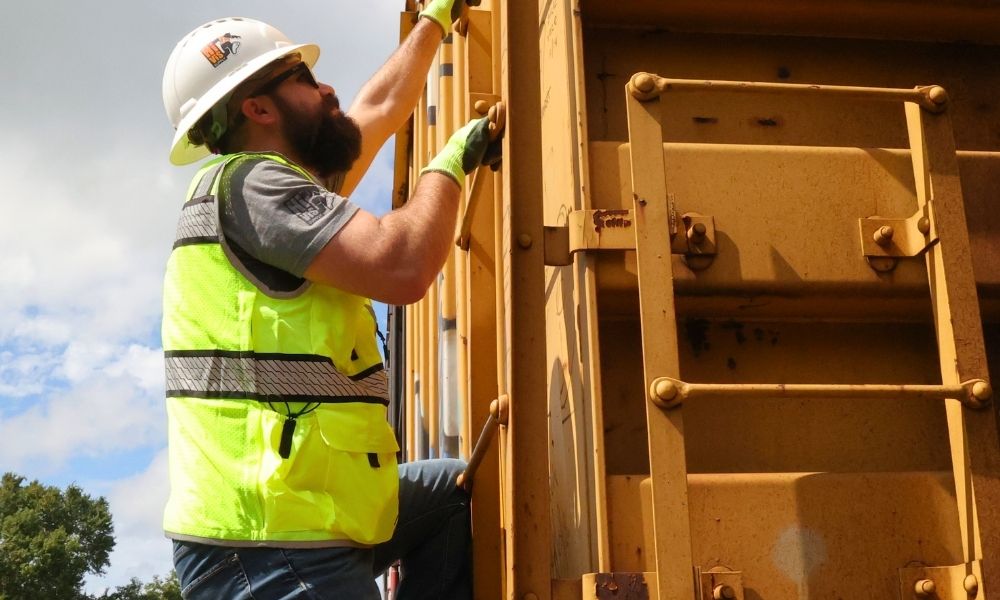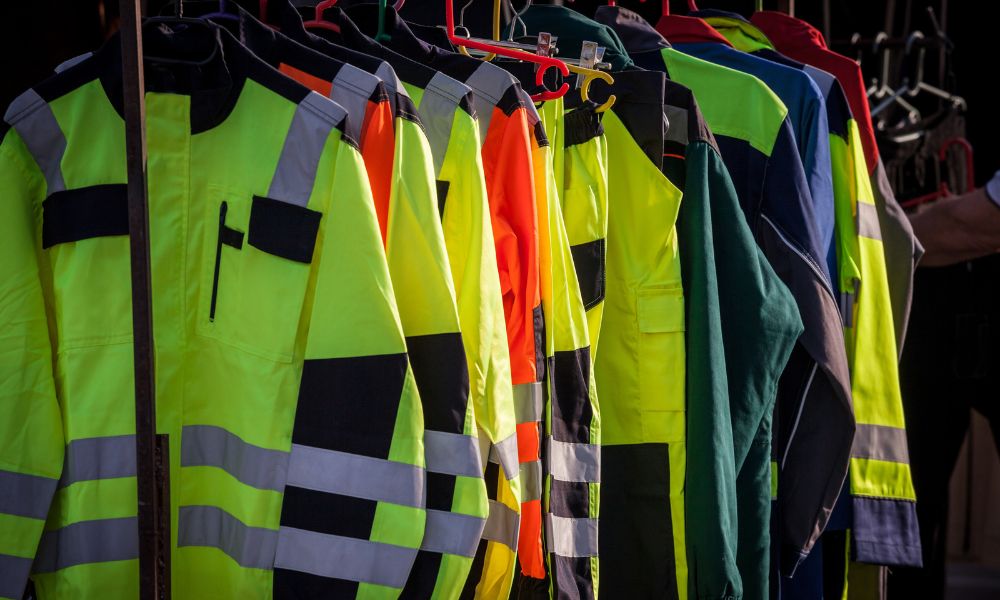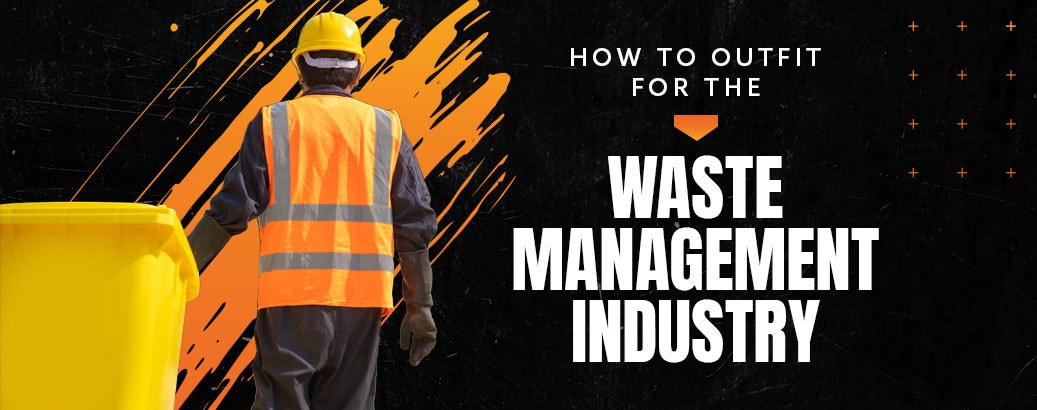Heat Stress Safety for Employees and Employers
- Apr 23, 2013
How to Avoid Heat Stress at Work

The outlook for the summer of 2013 looks like it's going to be quite a scorcher. While weather experts predict that an abundance of triple-digit record high temperatures will be broken around the globe, it's critical that outdoor workers and business owners keep themselves both informed and aware of the potentail dangers that are brought into play by the extreme heat.
- • An estimated 5 to 10 million workers are exposed each summer to heat-stress conditions in the USA.
- • 3,100 of those workers are inflicted with heat-related illness requiring emergency medical attention.
- • Over 1,300 people die each year in the US alone from heat-related factors. A majority of which are a direct result of overexertion during work or excercise activities.
- • Most importantly, 100% of these instances are 100% preventable.
What is heat Stress?
Heat stress, by definition is the strain put on the body by an increase in body heat. When the body heat rises, the heart beats faster. Ultimately, this can lead to an increase of the body's actual internal temperature.
How does it happen?
Heat Stress occurs from an increase in body heat. There are two factors (either alone or combined) that cause the body temperature to rise - an increase of internal heat caused by working muscles or an increase of external heat caused by various factors including weather, low ventilation, secondary heat sources, etc.
Who is most likely to be affected?
Those most likely to be affected by heat stress are:
- • Those who perform labor intensive duties outdoors in the sun or extreme heat
- • Those who perform labor intensive duties indoors where heat build-up becomes an issue due to insufficient cooling
These factors are compounded by certain jobs that require workers to wear heavy gear and/or protective clothing for safety reasons. While a 2 degree increase in body temperature can result in reduced brain performance, a 5 degree increase can result in heat stroke, heat exhaustion, and even death.
Below are some of the most common jobs where people suffer from heat stress. High temperatures and vigorous labor associated with these jobs can quickly elevate body temperatures to a dangerous level with almost no warning:
- • Roofing
- • Road Construction
- • General Construction
- • Landscaping
- • Waste Hauling
- • Iron Work
- • Drilling
- • Mining
- • Oil Rigging
- • Railroad and Transportation
- • Glass work
- • Foundry Workers/Metal Workers
- • Manufacturing
Heat Exhaustion vs. Heat Stroke
Heat exhaustion is the body's natural, instinctive response to an excessive loss of water and salt. Generally, it is brought on by extensive sweating and the subsequent failure to rehydrate and allow for periods of cooling down. Symptoms include moist clammy skin, and slightly increased body temperature.
Heat Stroke occurs when the body has completely lost its ability to control its own temperature. This is usually the end result of heat exhaustion that has went unaddressed, or ignored. Symptoms of heat stroke include:
- • Extreme fatigue
- • Dry, hot skin
- • Excessive rise in body temperature
While the result of untreated heat exhaustion may include fainting and even lead to heat stroke, the result of heat stroke itself can be brain damage, cardiac arrest and even death.
Steps for Prevention
In order to reduce the chances of heat stress and prevent heat exhaustion and stroke, the following common sense rules should be practiced in the workplace.
- • Get used to the heat as early as possible. Spend time early in the season getting your heart-rate up and conditioning yourself for the extreme summer temperatures. While it's unecessarry to train like a prize-fighter, it's just plain ignorant to step outside one day in the high heat and heavy sun, expecting your body to perform vigorous activity without being at least slightly prepared.
- • Have ample amounts of fluids on hand and take breaks in a shaded area. During extreme physical exertion, you should let your body cool down and hydrate between performances - Make quick frequent breaks for cool-down and hydration a part of your routine.
- • Wear clothing that is breathable, loose fitting and provides proper ventilation. This includes using proper protection from the sun such as a sun hat, cooling bandana or other accessories. When heavy clothing is required for protection purposes, consider investing in specialty cooling gear that is designed specifically for those circumstances - it will be well worth it as you'll be able to perform your duties in a more comfortable fashion while reducing the risks to your health.
- • Try to adjust your schedule and form the workday so that the most strenuous activities can be performed during the cooler parts of the day. This includes being aware of your surroundings and using the angle of the sun to your benefit. (Exploit the convenient shade that is offered by tall buildings or other structures during certain hours of the day)
- • Keep an eye on your fellow workers for signs and symptoms of elevated heat stress. Many people ignore the warning signs and your observance & awareness could help save a life. Encourage others to stay hydrated and break regularly.
- • Educate! Education is one of the most critical tools for preventing heat stress and heat related illness. Without knowing how quickly it can happen and understanding the proper preventative measures, an individual cannot properly protect themselves.
Important: Recommended Best Practices
Make sure your coworkers and employer are both aware of the serious dangers posed by working in the extreme heat. Educate them verbally or with printed information. Work together to devise and develop a heat stress prevention plan that is agreeable for everyone, including supervisors, shift managers, foremen and contractors. Reasonable amounts of time should be made available to employees for breaks and hydration. There should be an understanding that those times will fluctuate by the day and/or hour, based on the temperature changes.
Additionally, employers are strongly urged to set a temperature cutoff point for work - this means that work will immediately cease (once the temp reaches your cutoff point) and not resume until the temperature has decreased beyond that point. Once an agreement is made, it should be verified in writing and distributed to everyone who is involved or affected.
It should be very clear that the procedure will be followed. It is highly important that NO WORKER should EVER push their body beyond its physical limitations solely because they're afraid of repercussions, retaliation or punishment by an employer - your health is the number one priority, without it you cannot work at all.
Stay Cool!
Utilize the best practices from above keep your workplace accident and incident free. It helps to ensure a safer work environment, happier workers and a better employer. Nobody wants to be hospitalized, nobody wants to see a co-worker suffer an injury and no employer wants to deal with the legalities that could arise. The best practice for everyone is to be safe instead of sorry.
For additional information, visit NIOSH's Workplace Safety and Health Topics Heat Stress Page on the CDC website. They offer a variety of resources, as well as a downloadable and printable cards that can be used as resources for heat stress prevention and emergency treatment.
To view a complete inventory of products specially designed to reduce Heat Stress, visit our Heat Stress Products page now.






